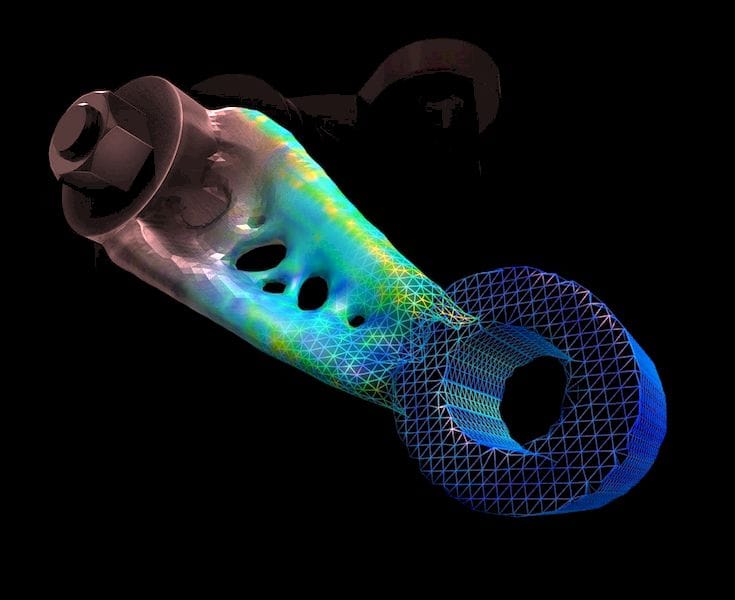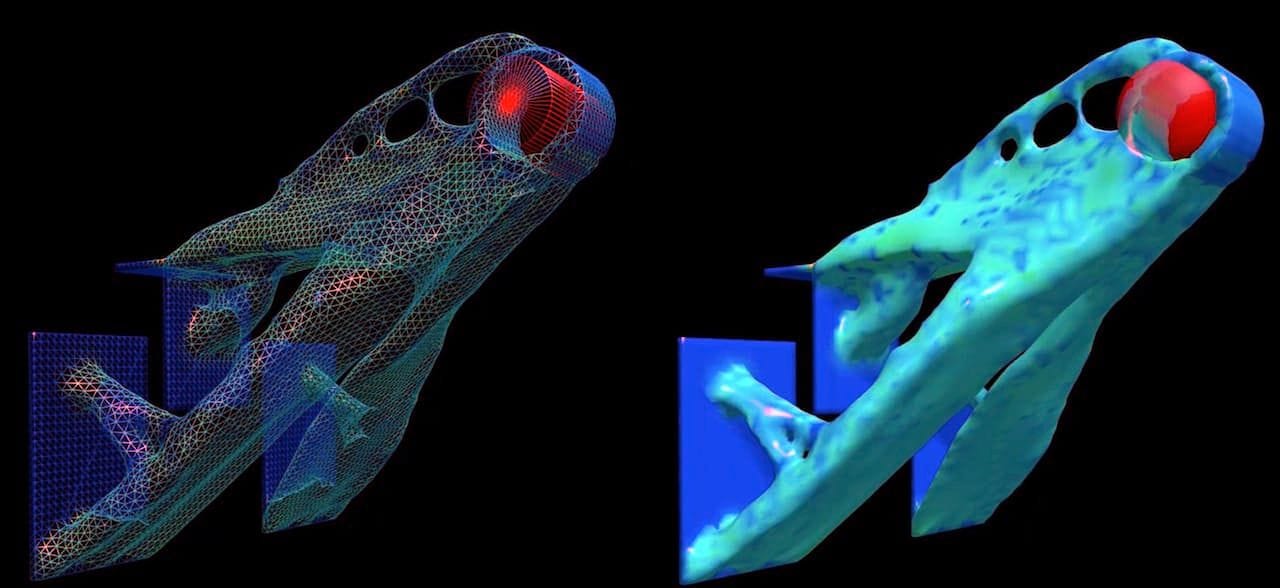
I saw something last week that shook me greatly: Live Parts from Desktop Metal.
At Solidworks World 2018, Desktop Metal and Dassault Systemes announced a partnership on a fascinating new feature Desktop Metal calls “Live Parts”, which could prove to be the way 3D CAD may be done in future tools.
Up to now the process of designing a part has been rather iterative: use a traditional CAD tool to create a prototype of the part, then use a second tool to analyze the design against a number of engineering constraints to find the weak points. Then, go back to the CAD tool to make adjustments to account for the weak points and keep iterating.
Eventually you arrive at something that meets the requirements.
It seems that Desktop Metal wished to attack this workflow and simplify it with advanced methods, and they came up with Live Parts.
Here’s how it works: in Solidworks you create a traditional 3D model and with it, the constraints that the design must adhere to. For example, a moving component cannot enter this zone, or this amount of force in that direction exists, etc.
These constraints are then exported directly from Solidworks to Desktop Metal’s new Live Parts cloud system. It’s running on Paperspace, a cloud provider that specializes in GPU services typically used for machine learning. But in this case the GPUs are used for Live Parts processing.
Live Parts accepts the constraints and then begins to generate the entire 3D model automatically.
It takes a “cellular” approach. Here’s how it works: the design is segmented into 3D “cells”, each of which has virtual “springs” on all sides. The constraints also include something called “attractors”.
Iteratively, Live Parts attempts to “solve” the design constraints by adjusting the cells. If the cells’ springs are considered too “stretched” to meet the attractor, then more cells are inserted. Similarly, if the springs are too “compressed”, they drop cells.
To watch this process is quite eerie, as fingerlike protrusions emerge from the sides and eventually find each other to form a solid object. After many iterations (which actually takes only a few minutes), a stable, final design is achieved – and it doesn’t necessarily look like anything you would have designed using conventional tools. Yet it does meet ALL of the specified constraints, just in a way you’d not thought of.

When a design is stable and complete, it is then “smoothed”, and exported back to Solidworks, where it can be handled in the usual manner.
Essentially this is a way to have an AI “helper” design the part for you. And it’s likely faster than any human helper you might have considered, too.
There is more: since Live Parts is iterative, you can tweak the constraints, or even add more, while the object is being generated. Perhaps you forgot “gravity”, or realized there is another force from another direction. Just tweak the settings and watch the live design “react” by reorganizing itself.
You can also provide guidance to Live Parts by offering ways to prioritize its decision making in several ways.
Observing the generation is fascinating, but I noticed a strange “wiggle”, as the object “grew”. I asked about this and was told that early versions of the tool would grow and then suddenly collapse at times. Their solution was to include a persistent “wind” to provide a wobbly effect on the process to ensure an object grows strong, just like trees do when growing in the wind. Very biological!
This video shows some of the generation, although I’d recommend trying it yourself simply to play around with the controls and see the live effects:
There are some significant limitations at the moment, however. The most glaring is that Live Parts does not yet work for assemblies, meaning you can only design static, single parts. But that’s still quite an accomplishment. And that limitation is something they could eventually overcome in any case.
You might wonder why Desktop Metal has produced this software, which seems a bit distant from their normal day job of producing desktop 3D metal printers. It’s because they have a sophisticated strategy to open up new markets for their devices.
The problem they – and almost every other 3D printer manufacturer – have is that customers simply don’t know how to make the unique and impossible parts that would justify the acquisition of 3D metal printers.
With this tool, they can. It’s an enabler.
Desktop Metal representatives told us that their system could be expanded in the future for a much wider audience. They said they were working on including thermal constraints, for example. They could add lattice features or other structural approaches. It’s quite open-ended.
But the Live Parts system could also work for plastic parts. Or any material; it’s just different constraints.
My thought is that this tool might represent the way CAD is done in the future: you don’t spend your time designing the part; instead you spend the majority of your time designing the requirements. Then the machine does the rest. Automation of design!
For now, Live Parts is a beta program, and it’s only available through Solidworks. We’re told that any Solidworks subscriber can use this system, but that you get only ten hours of compute time for your account on the cloud system. After that, it’s a whopping USD$25 per hour.
Heh. Just to put that in perspective, if a machine can generate a useful part in only a few moments, USD$25 an hour is essentially free.
Via Desktop Metal

